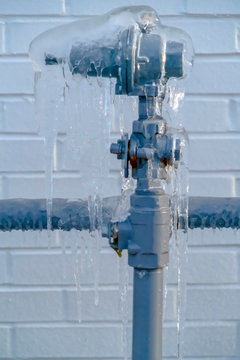Avoiding Frozen Plumbing in Winter: Expert Strategies
Avoiding Frozen Plumbing in Winter: Expert Strategies
Blog Article
On this page down the page yow will discover additional incredibly good information in relation to How To Avoid Freezing Pipes.

Cold weather can damage your plumbing, especially by freezing pipes. Right here's just how to prevent it from taking place and what to do if it does.
Introduction
As temperatures decline, the risk of frozen pipelines increases, potentially bring about costly repair work and water damage. Recognizing exactly how to avoid frozen pipes is essential for house owners in cool environments.
Recognizing Icy Pipelines
What creates pipelines to ice up?
Pipes freeze when exposed to temperatures below 32 ° F (0 ° C) for expanded durations. As water inside the pipes freezes, it increases, taxing the pipe walls and possibly triggering them to burst.
Threats and problems
Frozen pipelines can result in supply of water disruptions, residential or commercial property damages, and expensive fixings. Burst pipelines can flood homes and trigger extensive architectural damages.
Signs of Frozen Water Lines
Identifying frozen pipelines early can stop them from bursting.
Exactly how to determine icy pipes
Search for reduced water circulation from taps, uncommon smells or sounds from pipelines, and noticeable frost on exposed pipes.
Prevention Tips
Insulating susceptible pipes
Wrap pipelines in insulation sleeves or make use of warmth tape to protect them from freezing temperatures. Concentrate on pipes in unheated or external areas of the home.
Heating techniques
Keep interior rooms properly heated, specifically locations with plumbing. Open up cupboard doors to allow cozy air to flow around pipes under sinks.
Protecting Exterior Plumbing
Yard hose pipes and outdoor taps
Disconnect and drain pipes yard pipes prior to winter season. Mount frost-proof spigots or cover exterior taps with protected caps.
What to Do If Your Pipelines Freeze
Immediate actions to take
If you presume icy pipelines, keep faucets available to relieve pressure as the ice melts. Utilize a hairdryer or towels taken in warm water to thaw pipelines gradually.
Long-Term Solutions
Architectural adjustments
Consider rerouting pipes away from exterior walls or unheated areas. Include added insulation to attic rooms, cellars, and crawl spaces.
Updating insulation
Purchase top notch insulation for pipelines, attics, and walls. Correct insulation aids preserve constant temperatures and decreases the threat of icy pipelines.
Verdict
Protecting against icy pipes needs aggressive measures and quick feedbacks. By recognizing the causes, signs, and safety nets, house owners can protect their pipes during cold weather.
6 Proven Ways to Prevent Frozen Pipes and Protect Your Home
Disconnect and Drain Garden Hoses
Before winter arrives, start by disconnecting your garden hoses and draining any remaining water. Close the shut-off valves that supply outdoor hose bibs and leave the outdoor faucet open to allow any residual water to drain. For extra protection, consider using faucet covers throughout the colder months. It’s also important to drain water from any sprinkler supply lines following the manufacturer’s directions.
Insulate Exposed Pipes
Insulating your pipes is an effective way to prevent freezing. Pipe insulation is readily available at home improvement stores and is relatively inexpensive. Pay close attention to pipes in unheated areas such as the attic, basement, crawl spaces, or garage. Apply foam insulation generously to create a buffer against the cold. You can also wrap your pipes in heat tape or thermostat-controlled heat cables for added warmth.
Seal Air Leaks
Inspect your home for any cracks or openings that could let in cold air. Seal any holes around the piping in interior or exterior walls, as well as the sill plates where your home rests on its foundation. Additionally, make sure to keep your garage door closed unless you’re entering or exiting. Leaving it open creates a significant air leak that can lead to frozen pipes.
Allow Warm Air Circulation
During cold snaps, it’s essential to allow warm air to circulate evenly throughout your home. Leave interior doors ajar to promote better airflow. Open kitchen and bathroom cabinets to help distribute heat consistently around the rooms. If you have small children or pets, be sure to remove any household chemicals or potentially harmful cleaners from open cabinets for safety.
Let Faucets Drip
A small trickle of water can make a big difference in preventing ice formation inside your pipes. When temperatures drop significantly, start a drip of water from all faucets served by exposed pipes. This continuous flow helps prevent the water from freezing. Additionally, running a few faucets slightly can relieve pressure inside the pipes, reducing the chances of a rupture if the water inside does freeze.
https://choateshvac.com/6-proven-ways-to-prevent-frozen-pipes-and-protect-your-home/

I am very interested by How To Avoid Freezing Pipes and I hope you enjoyed reading my page. Appreciated our write up? Please share it. Help somebody else locate it. Bless you for your time. Return soon.
Free Quote Report this page